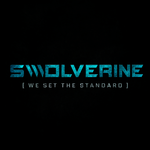When it comes to peptide research, dosage is everything. Epitalon is not a hormone or anabolic steroid; it’s a regulatory peptide that works at the genetic and cellular level. This means that the way it is dosed — how much, how often, and through which delivery method — plays a critical role in its potential effects on longevity, sleep, and immune function.
Unlike performance-enhancing compounds where higher doses may translate into greater results, Epitalon doesn’t follow that model. Clinical studies have found that low, cyclical dosing is sufficient to activate telomerase, restore melatonin secretion, and reduce age-related biomarkers. Increasing the dose does not appear to increase benefits, and may only add unnecessary risk.
In this guide, we’ll break down:
→ Standard research dosages for Epitalon
→ Delivery methods and their absorption differences
→ Cycling vs continuous administration
→ Safety considerations and research-only disclaimer
What Is Epitalon?
Epitalon is a synthetic tetrapeptide (Ala-Glu-Asp-Gly) developed to replicate the effects of epithalamin, a natural protein produced by the pineal gland. Its primary role is to activate telomerase, the enzyme responsible for preserving telomere length—the protective caps on chromosomes that naturally shorten with age and cellular division.
By stimulating telomerase activity, Epitalon is believed to:
→ Support healthy cellular aging
→ Promote immune system balance
→ Regulate melatonin secretion and circadian rhythm
→ Protect cells from oxidative stress
Epitalon first gained traction in Russian longevity research and is now widely used in anti-aging and performance optimization circles. For a deeper scientific breakdown, check out Swolverine's guide on Epitalon which explores its mechanisms, human data, and application strategies.
This guide will walk you through how it works, its benefits, how to stack it, common mistakes to avoid, and what to know before starting your first cycle.
How Epitalon Works (Why Dosage Matters)
Epitalon is unique among peptides because it acts as a regulatory signal rather than a direct hormone replacement. This is why low, cyclical dosing is sufficient — it’s not about forcefully pushing the body into a state, but about reminding cells of their natural programming.
→ Telomerase Activation
Epitalon stimulates the enzyme telomerase, which lengthens telomeres — the protective caps on chromosomes that shorten with age. Maintaining telomere length supports healthy cellular replication and slows senescence.
Khavinson, Vladimir. "Results and future of peptides in clinical practice." Handbook of Anti-Aging Medicine (2023): 10.
→ Melatonin Regulation
Epitalon improves pineal gland function, restoring the body’s natural melatonin rhythm. Since melatonin plays a role in both circadian rhythm and antioxidant defense, this is central to Epitalon’s anti-aging profile.
→ Gene Expression & Antioxidant Effects
Epitalon has been shown to influence gene expression related to stress response and apoptosis, while also lowering oxidative damage in cells.
Why This Matters for Dosage
Because Epitalon acts at a regulatory level, higher doses do not necessarily improve results. Once telomerase is activated and melatonin secretion is restored, the peptide has essentially “flipped the switch.” This explains why short cycles of low-dose Epitalon have been effective in studies, while prolonged or high-dose protocols show little added benefit.
Standard Research Dosages
Clinical and preclinical studies on Epitalon have been relatively consistent in their dosing protocols. Unlike many peptides that vary widely in administration, Epitalon has shown benefits at low and cyclical doses.
→ Injectable Protocols
The majority of research uses subcutaneous (SC) or intramuscular (IM) injections.
-
Typical range: 5–10 mg per day
-
Duration: 10–20 consecutive days
-
Frequency: Cycles are often repeated every 6–12 months
→ High-Dose Studies
Some trials have experimented with higher doses (up to 50 mg/day), but these have not demonstrated stronger or longer-lasting results compared to the standard 5–10 mg/day range.
→ Longevity Protocols
For anti-aging applications, protocols often repeat a 10–20 day course once or twice per year. This mirrors the original trials in elderly subjects, where repeated cycles maintained improved health markers over long-term observation.
Alternative Dosing Protocols
While injectable Epitalon (subcutaneous or intramuscular) remains the gold standard in research, other delivery methods have been explored. These alternatives offer convenience, but come with limitations in absorption and evidence.
→ Nasal Spray Administration
Epitalon can be formulated into a nasal spray, which delivers the peptide through the nasal mucosa for faster systemic absorption. Research is limited, but some studies have suggested it may influence circadian rhythm and melatonin production. Typical research ranges fall around 10–20 mg per day in divided doses.
→ Oral Administration
Oral Epitalon is the least effective delivery method, due to enzymatic breakdown in the digestive tract. This limits its bioavailability, and there is little evidence to support clinical benefits from oral dosing.
→ Sublingual Formulations
Some experimental formulations use sublingual drops to bypass digestion. Data is minimal, but anecdotal use suggests potential absorption benefits compared to oral capsules.
Al-Dulaimi, Sarah, et al. "Epitalon increases telomere length in human cell lines through telomerase upregulation or ALT activity." Biogerontology 26.5 (2025): 178.
Cycling vs Continuous Use
One of the most important aspects of Epitalon dosing is that it is cyclical, not continuous. Unlike daily hormone replacement or anabolic therapies, Epitalon’s effects come from short-term courses that “reset” cellular and circadian mechanisms.
→ Short-Term Cycles
Research most commonly uses 10–20 day courses of daily Epitalon injections. These short cycles are sufficient to activate telomerase, restore melatonin secretion, and influence immune markers.
→ Long-Term Protocols
For longevity applications, Epitalon cycles are often repeated every 6–12 months. This intermittent approach maintains benefits without the need for constant administration.
→ Why Continuous Use Isn’t Supported
Continuous daily dosing has not been shown to improve outcomes, and may introduce unnecessary risks by overstimulating regulatory pathways. Epitalon’s role is to remind cells of their natural processes — once those mechanisms are activated, ongoing high-frequency dosing is unnecessary.
Anisimov, Vladimir N., and Vladimir Kh Khavinson. "Pineal peptides as modulators of aging." Aging interventions and therapies. 2005. 127-146.
Age and Population Considerations
Most of the available Epitalon research has focused on older adults, since aging-related declines in melatonin, telomere length, and immune function make them the most responsive group. Younger populations have not been studied as extensively, and therefore most dosage guidance comes from gerontological research.
→ Elderly Populations
Older adults experience the greatest benefit, as Epitalon restores melatonin secretion and delays age-related cellular decline.
→ Younger Populations
There is little evidence supporting Epitalon use in younger individuals. Since their melatonin and telomerase activity are typically intact, they are less likely to experience dramatic improvements.
→ Male vs Female Response
Clinical findings suggest that men and women respond similarly to Epitalon, with no significant sex-based differences reported in sleep, immune, or longevity markers.
Practical Recommendations
The evidence surrounding Epitalon points toward low-dose, cyclical protocols as the most effective and safest way to use the peptide in research. Unlike anabolic compounds where higher doses may push results, Epitalon works best when it resets regulatory pathways with intermittent use.
→ Stick to Research-Backed Ranges
→ Standard dosage: 5–10 mg per day via subcutaneous or intramuscular injection
→ Duration: 10–20 consecutive days
→ Repetition: Once or twice per year for longevity applications
→ Avoid Excessive Dosing
Higher doses (above 20 mg/day) have not shown greater benefits and may only increase the risk of unstudied outcomes.
→ Delivery Matters
Injectable delivery remains the gold standard in research. Oral and sublingual routes lack evidence, while nasal spray has shown some effect but with lower bioavailability.
Xiao, Ya-Jun, et al. "Efficacy and safety of retatrutide for overweight/obesity or type 2 diabetes: a systematic review and meta-analysis." (2025).
Side Effects of Epitalon
Epitalon is generally considered to be well-tolerated in the research that exists, with most studies reporting minimal adverse reactions. However, because much of the data comes from small human trials and preclinical research, the full spectrum of risks isn’t completely known. Potential side effects include:
→ Mild Injection Site Reactions
Some users may experience redness, itching, or irritation at the injection site. These reactions are typically short-lived and resolve on their own.
→ Sleep Pattern Changes
Epitalon has been shown to influence melatonin secretion and circadian rhythm. While this can improve sleep quality, some individuals may initially notice vivid dreams, lighter sleep, or difficulty adjusting as their body adapts.
→ Hormonal and Metabolic Shifts
By interacting with the pineal gland and telomerase activity, Epitalon may alter hormone balance and metabolic markers. Though most research suggests positive outcomes, the long-term impact on endocrine health remains unclear.
→ Unknown Long-Term Safety
There is limited large-scale, long-term data in humans. While animal studies suggest Epitalon is safe even at higher doses, caution is warranted when extrapolating to long-term human use.
Disclaimer: Epitalon is not FDA-approved, and research is still emerging. Anyone considering its use should consult a qualified healthcare professional before beginning supplementation or peptide therapy.
Legal and Regulatory Disclaimer
Epitalon is still classified as an experimental peptide worldwide. It is not approved as a therapeutic drug in the United States, Canada, Europe, or Australia, and its use is restricted to research purposes only.
→ United States
Epitalon is not FDA-approved and cannot be sold legally as a dietary supplement or prescription drug. It is available only through research chemical suppliers.
→ Europe
Despite decades of research in Russia and Eastern Europe, Epitalon is not recognized as a medicinal product under the European Medicines Agency (EMA).
→ Russia and Eastern Europe
Epitalon has been used in gerontological clinics in Russia under experimental frameworks, where Khavinson’s research was first conducted. However, it remains a research peptide, not a formally approved drug.
→ Canada and Australia
Both Canada and Australia classify Epitalon as an unapproved new substance, prohibiting sales for human consumption
⚠️ Disclaimer: The information in this guide is for educational and informational purposes only. Epitalon is not FDA- or EMA-approved, and human use outside controlled research is not permitted.
Araj, Szymon Kamil, et al. "Overview of Epitalon—Highly Bioactive Pineal Tetrapeptide with Promising Properties." International Journal of Molecular Sciences 26.6 (2025): 2691.
Final Thoughts
Epitalon has earned its reputation as one of the most promising anti-aging peptides, but its power lies in how it is dosed. Unlike compounds where higher amounts may yield stronger effects, Epitalon follows a very different rule: low-dose, short-term cycles are enough to trigger long-lasting changes in telomerase activity, melatonin secretion, and immune balance.
Key Takeaways:
→ Standard research dosing: 5–10 mg/day for 10–20 days
→ Cyclical use: repeated once or twice per year for sustained benefits
→ Delivery method matters: injectables are the only route strongly supported by research
→ Long-term safety: appears favorable, but requires more large-scale human trials
For now, Epitalon should be regarded strictly as a research compound. But if ongoing studies continue to validate Khavinson’s decades of work, Epitalon may one day stand as a cornerstone of longevity and regenerative medicine.







